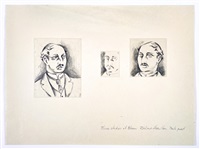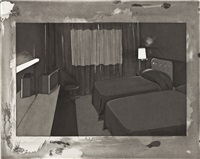Richard Hamilton
(British, 1922–2011)
Biography
Richard Hamilton was an English artist known for producing some of the earliest works of Pop Art. Though he used a wide variety of techniques during his career, his most recognizable works, such as Study for a Fashion Plate (1969), were done in collage. “It's not so easy to create a memorable image,” he once reflected. “Art is made through the sensibilities of an artist, and the kind of ambitions and intelligence, curiosity and inner direction that role requires.” Born on February 24, 1922 in London, United Kingdom, Hamilton was working as an apprentice at an electrical components firm when he began taking art classes in the evenings at Saint Martin’s School of Art. Entering the Royal Academy at the age of 16, Hamilton was later expelled for not following the school’s regulations. In 1956, he completed his first major collage work, Just what is it that makes today’s homes so different, so appealing?, a seminal image in Pop Art history. Accepting an offer to teach at his old alma mater, Hamilton mentored a number of students during the late 1950s, including Peter Blake and David Hockney. During the mid-1960s, the artist became increasingly interested in the work of Marcel Duchamp, and reflected his interests by attempting to proliferate his own art in various forms of media. Through mutual friends, Hamilton was introduced to Paul McCartney, and subsequently produced the cover art for The Beatles’ White Album (1968). Over the following decades, Hamilton focused on producing prints as well as incorporating new technologies, such as computer software, into his practice. The artist died on September 13, 2011 in Oxfordshire, United Kingdom. Today, his works are held in the collections of The Museum of Modern Art in New York, the Tate Gallery in London, the Los Angeles County Museum of Art, and the National Gallery of Australia in Canberra, among others.
Richard Hamilton
(2,633 results)






















-.jpg)

